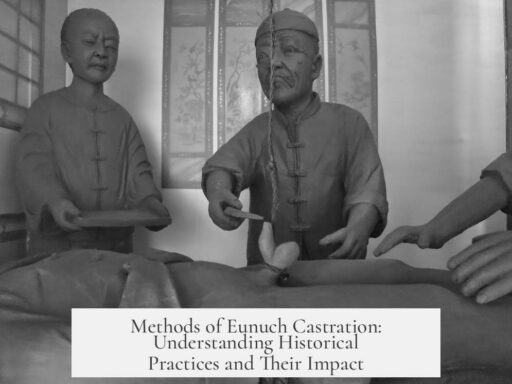The 1992 song “Baby Got Back” reflects a prevailing cultural norm in America where predominantly white mainstream fashion and media favored extremely thin female bodies and disparaged larger, curvier figures typically associated with Black and Latina women. The song challenged these norms by celebrating fuller figures and contributed to shifting beauty ideals over time.
In 1992, the dominant fashion ideal in American society emphasized skinniness, often termed “heroin chic.” This aesthetic featured waifish, angular, and bone-thin models, who were primarily white. Iconic figures like Kate Moss exemplified this trend. The fashion industry’s preference implicitly sidelined women with voluptuous bodies, particularly large posteriors, which was a characteristic more commonly linked to Black and Latina women. This idealization created a pronounced racial and class divide—the high-fashion sphere remained predominantly white and upper-class, marginalizing bodily expressions rooted in Black culture.
This context is crucial to understanding the significance of Sir Mix-a-Lot’s “Baby Got Back.” The song directly challenges the then-dominant beauty standards by celebrating curves and specifically “big butts,” highlighting a preference that counters prevailing norms. The track opens with a spoken monologue mocking negative stereotypes toward large posteriors and Black women, exposing deep-seated racialized biases with lines such as “She looks like a total prostitute… her butt, it’s just so big… gross… She’s just so… Black!” This acknowledgment of historical stigmas connects to earlier colonial and 19th-century pseudoscientific ideas, which framed Black female bodies as hypersexual and immoral. These racist stereotypes endured into contemporary culture and influenced how bodies were perceived and valued.
Sir Mix-a-Lot leveraged hip-hop—a genre emerging as a powerful platform for African American cultural expression since the late 1970s—to voice these counter-narratives. “Baby Got Back” became a cultural and countercultural statement that celebrated body types dismissed or shamed by mainstream white aesthetics. The song was seen as empowering, even feminist, in academic and social circles, providing representation and pride for those historically sidelined in popular media.
The song’s massive impact is evident from its commercial success. It was the second best-selling U.S. single in 1992 and topped the Billboard Hot 100 for five weeks. It also received a Grammy nomination for Best Rap Solo Performance. This popularity brought mainstream attention to fuller female figures and challenged prevailing norms in ways popular media rarely did at the time.
The cultural climate of the early 1990s was ripe for such a challenge. Hip-hop’s rise allowed African American artists to contest mainstream ideals and promote alternative aesthetics rooted in their lived experiences. Beyond just a preference for larger posteriors, “Baby Got Back” symbolized resistance to a narrow, exclusionary view of beauty enforced by predominantly white cultural production in fashion and media.
Over time, the influence of the song and similar cultural shifts contributed to a gradual evolution in the zeitgeist surrounding body ideals. By the late 1990s and early 2000s, society began to embrace, at least more visibly, diverse body types and more prominently featured curvier figures in music videos, advertisements, and fashion. This shift owes in part to the earlier cultural provocations such as “Baby Got Back,” which normalized celebrating curves and helped break the monopoly of ultra-thin ideals.
In summary:
- Predominantly white mainstream culture in 1992 admired extremely thin, “heroin chic” bodies, sidelining larger, curvier figures often linked to Black and Latina women.
- Historical racial stereotypes contributed to the stigmatization of larger Black female bodies, reinforcing negative perceptions of large posteriors.
- “Baby Got Back” served as a direct challenge to these norms, celebrating fuller figures and offering empowerment to marginalized body types.
- The song achieved notable commercial and cultural success, influencing public perceptions and encouraging broader acceptance of diverse body shapes.
- It contributed to the longer-term shift in American beauty ideals that became more inclusive in the decades following its release.
Did White America Disdain Large Female Posteriors in 1992? And Did “Baby Got Back” Change That? Let’s Break It Down
Yes, in 1992, mainstream white American culture largely idealized thin, slender female bodies and disfavored larger posteriors, particularly those associated with Black and Latina women. Sir Mix-a-Lot’s “Baby Got Back” flipped this narrative on its head, offering a bold celebration of curves at a time when the fashion and media spotlight loved the opposite. It wasn’t just a catchy song; it was a cultural statement challenging prevailing beauty standards.
Now, let’s take a journey back to understand the cultural backdrop and the impact of this iconic track.
The Roots: Historical Stereotypes of Black Female Bodies
Long before the 1990s, a dark and complicated legacy shaped how Black women’s bodies — and particularly their posteriors — were perceived. Many might be shocked to learn that negative stereotyping around features like large buttocks traces back centuries. In the 19th century, colonial pseudoscience cast Black women as overly sexual and promiscuous.
“Some women were even exhibited in human zoos… Sarah Baartman, dubbed the ‘Hottentot Venus,’ became a subject of scientific and public spectacle — all because of her body shape,” explains cultural historian Robin Mitchell.
This framing deeply embedded harmful tropes into Western—and later American—culture: Black female bodies were often hypersexualized while white women were idealized as pure and virginal. As Patricia Hill Collins discusses in her seminal Black Feminist Thought, these stereotypes helped justify segregation and systemic racism, continuing well into the late 20th century.
Fast forward to early 1990s America, many mainstream media outlets still carried echoes of this framing—often painting larger behinds, especially on Black women, as “wrong” or “undesirable.”
The 1990s Fashion Scene: Skinny Was King
If you liked curves, you were swimming against a very skinny tide. The 1990s were marked by the “heroin chic” look—think Kate Moss: waifish, angular, barely-there bodies dominated magazines and runway shows.
This aesthetic was less about health and more about a stark, edgy image that white-dominated fashion embraced mercilessly. Meanwhile, Black and Latina women, with naturally fuller figures, were often marginalized or forced to conform to these narrow ideals.
And yes, there was a distinct racial and class dimension to this too. High fashion was and largely remains a white and upper-class affair, so these narrow standards didn’t reflect the diversity of real women across America.
Enter “Baby Got Back”: A Cultural Counterpunch
Sir Mix-a-Lot’s 1992 hit blasted onto the scene with lyrics few expected: a proud celebration of a “big butt.” With lines like “I like big butts and I cannot lie,” the track wasn’t just about attraction; it was a direct challenge to prevailing white-centric beauty norms.
The song’s spoken word intro—where a white woman disparages a woman with a large posterior—echoed the microaggressions and stereotypes Black women faced daily. To counter that, Sir Mix-a-Lot’s lyrics celebrated curves as desirable, powerful, and sexy.
“She looks like a total prostitute… her butt, it’s just so big… gross… She’s just so… Black!” the intro declares, calling out the racism and body-shaming embedded in cultural norms.
At its heart, “Baby Got Back” was much more than a club banger—it was a witty, brash, and unapologetic stand for a marginalized aesthetic. For many contemporary listeners, especially in university and feminist circles, it felt empowering and even feminist.
One person reminisces:
“When the song came out, my feminist theory TA praised it fiercely. It honored body shapes typically denied by mainstream culture, celebrating Black and Latina beauty where it mattered most.”
The Song’s Cultural Clout: More than Just a Party Jam
“Baby Got Back” didn’t fade into the background. It became the second best-selling song in the U.S. in 1992 and reigned five weeks atop the Billboard Hot 100. The Grammys even nominated it for Best Hip-Hop Song, a nod to its cultural resonance beyond just catchy hooks.
This success highlights that Americans were hungry for something fresh—a different kind of beauty celebration. The song symbolized a pushback against skinny reverence, particularly within a fashion and pop culture world controlled by white, upper-class gatekeepers.
Hip-Hop and Expression: A Broader Context
To truly understand the importance of “Baby Got Back,” one needs to appreciate hip-hop’s roots as a platform for African American cultural expression. Born in urban neighborhoods in the late ’70s and ’80s, hip-hop became a megaphone for voices that mainstream media ignored or misrepresented.
Through rapping, artists claimed authority over how their communities were portrayed. Sir Mix-a-Lot’s hit song joined ranks with other works that challenged stereotypes and redefined beauty from Black cultural perspectives.
So, the song was not just about derrieres—it was a statement about race, identity, and reclaiming dignity amid prevailing cultural biases.
Did “Baby Got Back” Shift the Cultural Zeitgeist? Yes, but Slowly
It would be naive to say one song suddenly transformed America’s views overnight. Change in cultural ideals—especially those etched deep in racial histories—happens gradually and unevenly.
Yet “Baby Got Back” undoubtedly punched a hole through the mainstream narrative. It popularized and normalized larger posteriors beyond Black and Latino communities. Today, the celebration of curves is far more common, and the geeky skinny ideal from the ’90s is often laughed at by younger generations.
Its influence rippled into fashion, music, and media, encouraging people to embrace diverse body types and question whitewashed beauty standards.
What Can We Learn From This Cultural Moment?
- Beauty standards are socially constructed, and often racialized. What is celebrated or disparaged reflects deeper power structures, not innate truths.
- Pop culture can be a powerful challenger of entrenched norms. Songs like “Baby Got Back” show how music can shift perceptions and empower marginalized groups.
- Change is messy and complex. There’s no magic bullet, but cultural moments add layers of progress towards more inclusive ideals.
If you’re curious, think about your own views on beauty and where they come from. Do you spot historical influences acting beneath your preferences? How would celebrating diversity in body shapes enrich society and self-esteem today?
Final Thoughts
In 1992, mainstream white American culture largely disdained large female posteriors, favoring skinny models aligned with “heroin chic.” This was intertwined with deep-rooted racial stereotypes of Black women and a narrow beauty ideal.
Sir Mix-a-Lot’s “Baby Got Back” was a watershed moment that challenged these norms—highlighting, celebrating, and empowering curves traditionally marginalized or mocked. It sparked conversations, inspired shifts in fashion and media, and broadened the public’s appreciation for different body types.
More than just a fun track, “Baby Got Back” is a cultural milestone—a bold “No thanks” to exclusion and a vibrant “Yes, please!” to diversity and Black cultural pride.
So next time you hear that famous bassline, remember it’s not just a party jam—it’s a small but mighty rebellion against a long legacy of narrow beauty standards. And that’s something to shake your tail feather about.
Was disdaining large female posteriors common in white American culture in the early 1990s?
Yes. The dominant fashion and media ideal focused on very thin, waiflike models. This look was mostly promoted by white-dominated industries and often dismissed fuller figures, especially those typical of Black and Latina women.
How does “Baby Got Back” respond to mainstream beauty standards of its time?
The song challenges the skinny ideal favored in white-dominated culture. It celebrates larger, curvier bodies, especially Black and Latina women’s shapes. It pushed back against prevailing norms by embracing features viewed as taboo or undesirable.
Did “Baby Got Back” play a role in changing attitudes toward body shape?
Yes. It was a widely popular song that elevated fuller figures and was seen as empowering. It helped bring more visibility and acceptance to non-skinny body types in mainstream culture during the 1990s.
Was the song considered feminist or empowering when it was released?
Some viewed it as empowering and feminist, especially within certain academic and cultural circles. It honored body types marginalized or shamed by mainstream media and contrasted with other misogynistic trends in rap at the time.
How does the song connect to broader African American cultural expression?
“Baby Got Back” fits into hip-hop’s role as a voice for African American identity and experience. It pushed back against stereotypes and societal ideals imposed by predominantly white culture, asserting pride in Black bodies and heritage.


